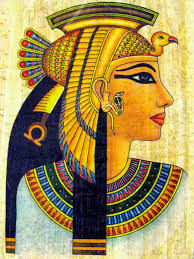Stamp: Ramesses II statue from the Great Temple of Ptah (Egypt- Revenue Stamps 1965)
Ramesses II statue from the Great Temple of Ptah (Egypt- Revenue Stamps 1965)
01 January (Egypt- Revenue Stamps ) within release Consular goes into circulation Stamp Ramesses II statue from the Great Temple of Ptah face value 1 Egyptian pound
| Stamp Ramesses II statue from the Great Temple of Ptah in catalogues | |
|---|---|
| Colnect codes: | Col: EG C1965-01 |
Stamp is square format.
Inscribed "El gumhuriya el arabbiya el muttahida" (The United Arab Republic) at the top and "Iradat maliya" (Fiscal Revenues) at the bottom in ArabicStamp Ramesses II statue from the Great Temple of Ptah it reflects the thematic directions:
Archaeology or archeology[a] is the study of human activity through the recovery and analysis of material culture. The archaeological record consists of artifacts, architecture, biofacts or ecofacts, sites, and cultural landscapes. Archaeology can be considered both a social science and a branch of the humanities. It is usually considered an independent academic discipline, but may also be classified as part of anthropology (in North America – the four-field approach), history or geography
Art is a diverse range of human activities in creating visual, auditory or performing artifacts (artworks), expressing the author's imaginative or technical skill, intended to be appreciated for their beauty or emotional power. In their most general form these activities include the production of works of art, the criticism of art, the study of the history of art, and the aesthetic dissemination of art. The oldest documented forms of art are visual arts, which include creation of images or objects in fields including painting, sculpture, printmaking, photography, and other visual media. Architecture is often included as one of the visual arts; however, like the decorative arts, or advertising, it involves the creation of objects where the practical considerations of use are essential—in a way that they usually are not in a painting, for example. Music, theatre, film, dance, and other performing arts, as well as literature and other media such as interactive media, are included in a broader definition of art or the arts. Until the 17th century, art referred to any skill or mastery and was not differentiated from crafts or sciences. In modern usage after the 17th century, where aesthetic considerations are paramount, the fine arts are separated and distinguished from acquired skills in general, such as the decorative or applied arts.
Pharaoh (/ˈfɛəroʊ/, US also /ˈfeɪ.roʊ/; Egyptian: pr ꜥꜣ; Coptic: ⲡⲣ̄ⲣⲟ, romanized: Pǝrro; Biblical Hebrew: פַּרְעֹה Parʿō) is the vernacular term often used for the monarchs of ancient Egypt, who ruled from the First Dynasty (c. 3150 BCE) until the annexation of Egypt by the Roman Republic in 30 BCE. However, regardless of gender, "king" was the term used most frequently by the ancient Egyptians for their monarchs through the middle of the Eighteenth Dynasty during the New Kingdom. The earliest confirmed instances of "pharaoh" used contemporaneously for a ruler were a letter to Akhenaten (reigned c. 1353–1336 BCE) or an inscription possibly referring to Thutmose III (c. 1479–1425 BCE).
A statue is a free-standing sculpture in which the realistic, full-length figures of persons or animals are carved or cast in a durable material such as wood, metal or stone. Typical statues are life-sized or close to life-size. A sculpture that represents persons or animals in full figure, but that is small enough to lift and carry is a statuette or figurine, whilst those that are more than twice life-size are regarded as colossal statues.




